Short of owning a fishing boat, kayak fishing gives the saltwater fisherman the most optionality and “chances” to catch fish. Let’s first look at some other common modes of fishing, and it will become pretty clear how kayak fishing opens up optionality while being convenient at the same time.
The shore fisherman can fish up and down the shore (or pier), but that’s it. If the fish are beyond his casting range, he can’t get to them. His options are 1) give up, 2) lower expectations and fish for a different species, or 3) spend hours “waiting it out” until conditions change or a school of fish swims by.
The surf fisherman has more range than the average shore fisherman, because he can drive miles of beachfront looking for fish. If the surf fish are active and hungry that day, then great. If not, he’s usually out of luck and will still have to pick one of the three options listed above. Now, there are a tiny handful of expert surf fishermen out there that know how to find the exact spot where fish are biting along miles of beach, under certain conditions. These fishermen are rare and most folks have not developed skills to this level. This level of skill is impressive and it’s definitely something to strive for, but there are times when even they can’t catch fish. Sometimes, the surf is just “dead”. Another aspect of surf fishing is that there is no place to hide. If it’s rough (or full of Sargassum) on a given day, then you are stuck with those conditions, as there is no place to find a wind break or a change of scenery.
The walk-in wade fisherman has some freedom to roam, but he can only move through the water at slow speed. Wading through the water is slow, hard work, especially if the bottom is muddy, or covered with tall grass or oyster shells. Also, depending on where you are wading, you may not have the option to change environments. For example, if you are wading on an expansive flat in knee deep water, you can wade for 2 miles and still find yourself on the same flat in knee deep water.
Boat fishing offers the most options, because the boat fisherman can pretty much go wherever he wants over a large area. It’s not unheard of for boat fishermen to drive 30+ miles from the boat ramp to get to their fishing spot. Corpus Christi fishermen launching at Bird Island Basin to fish Baffin Bay and the Land Cut drive this distance all the time. If the boat fisherman is not catching fish, he can move as often as he needs to until he finds fish, every ten minutes if he wants. There are many negative aspects to owning and running a boat (I’ll get into these in another article), but it does offer the fisherman the most options on the water.
Then we have the kayak fisherman. The kayak fisherman is able to do almost everything that the boat fisherman can do, but only within a few miles of his launch point. So, he has a lot of options available to him, with few of the downsides of owning a boat. In addition, he can do some special things that boat fisherman can’t do, which adds to the allure of kayak fishing. I will get into all of this later, but first, I wanted to start with a little motivation.
A Little Kayak Fishing Motivation
My primary fishing kayak is “Old Blue”, a simple, no frills, plastic, sit-on-top kayak. Here she is:
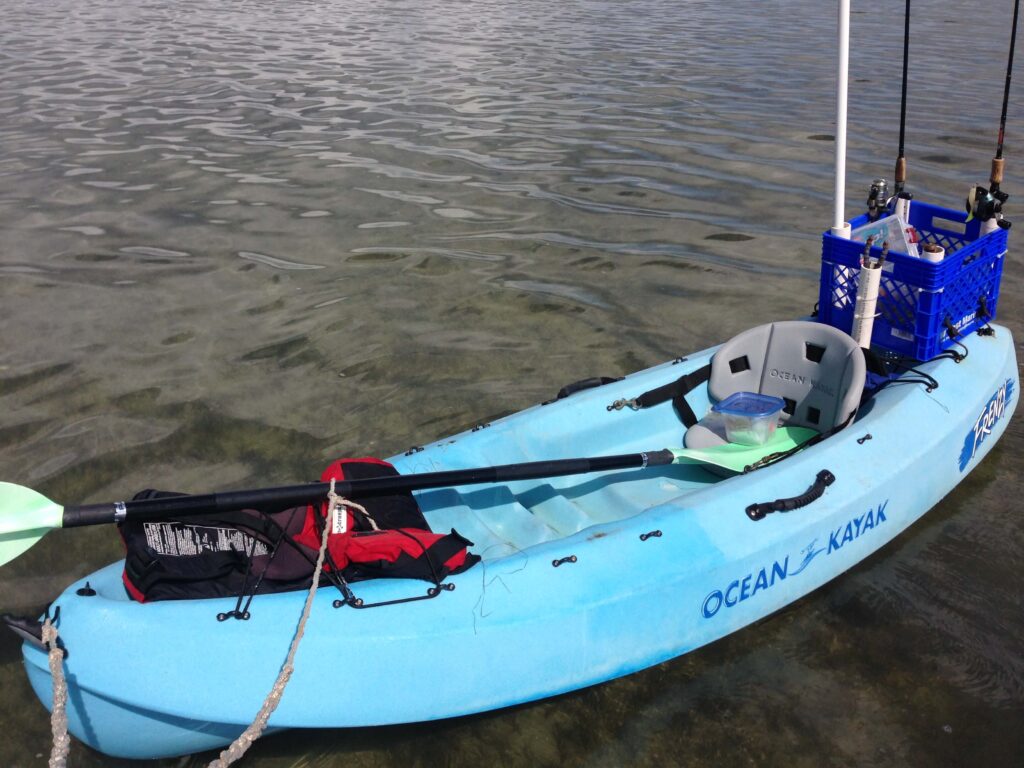
Old Blue is a “Frenzy” model from the Ocean Kayak brand, when Ocean Kayak was marketed as a stand-alone brand. The Frenzy model has long been discontinued, and the Ocean Kayak name is now a product line under Johnson Outdoors/Old Town. At only 9′ long and 44 lbs, most would consider this kayak nothing more than a fun kayak for the beach, not a serious fishing kayak. But as you can see, things are not always as they seem. All of these fish shown below were caught from Old Blue.
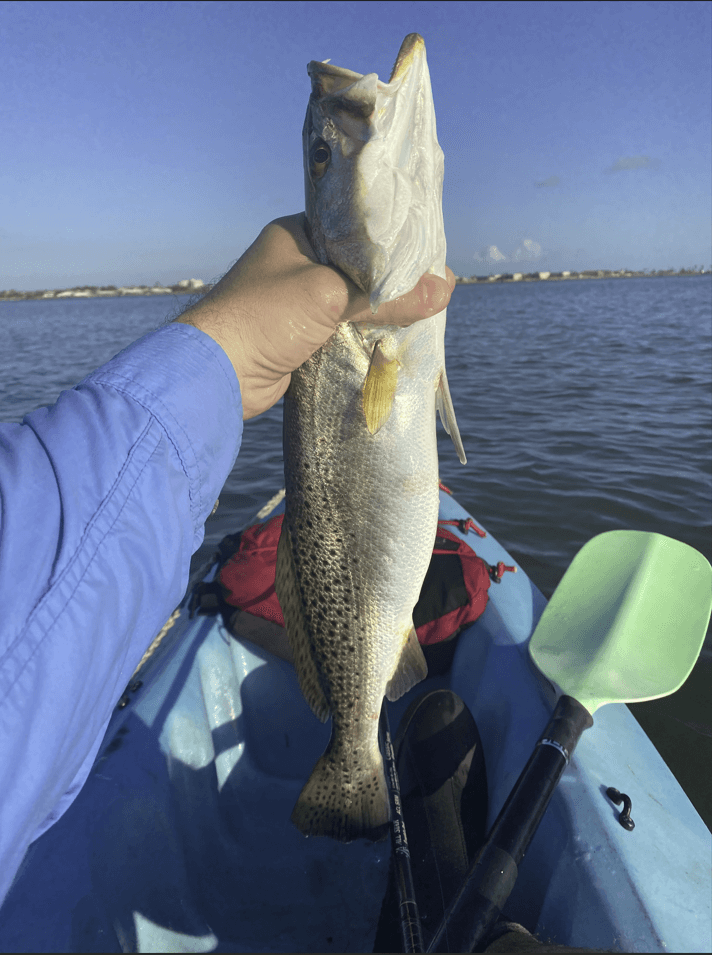
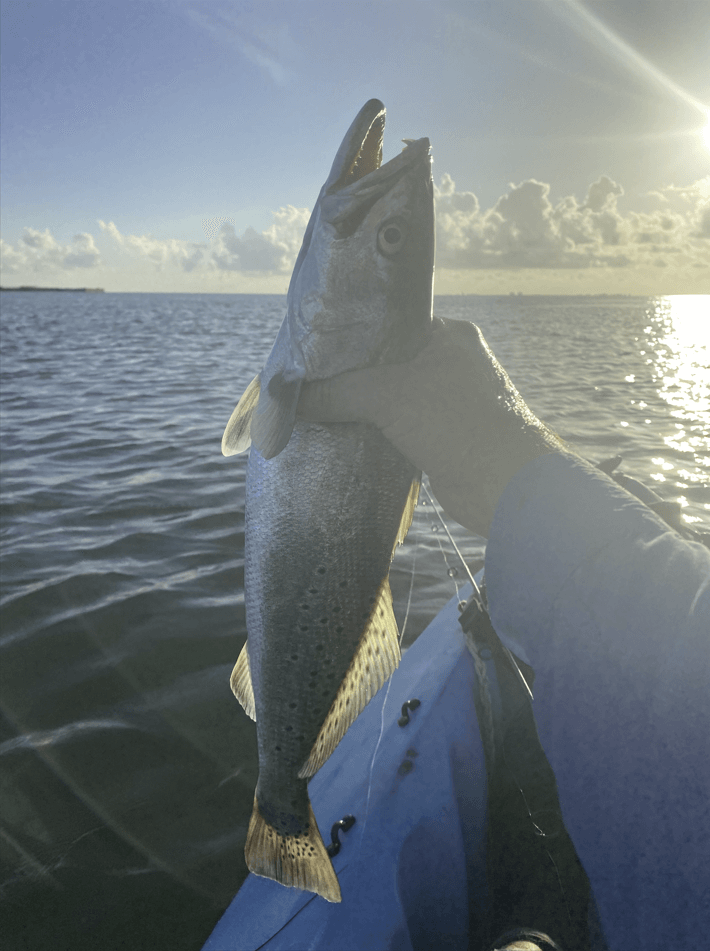
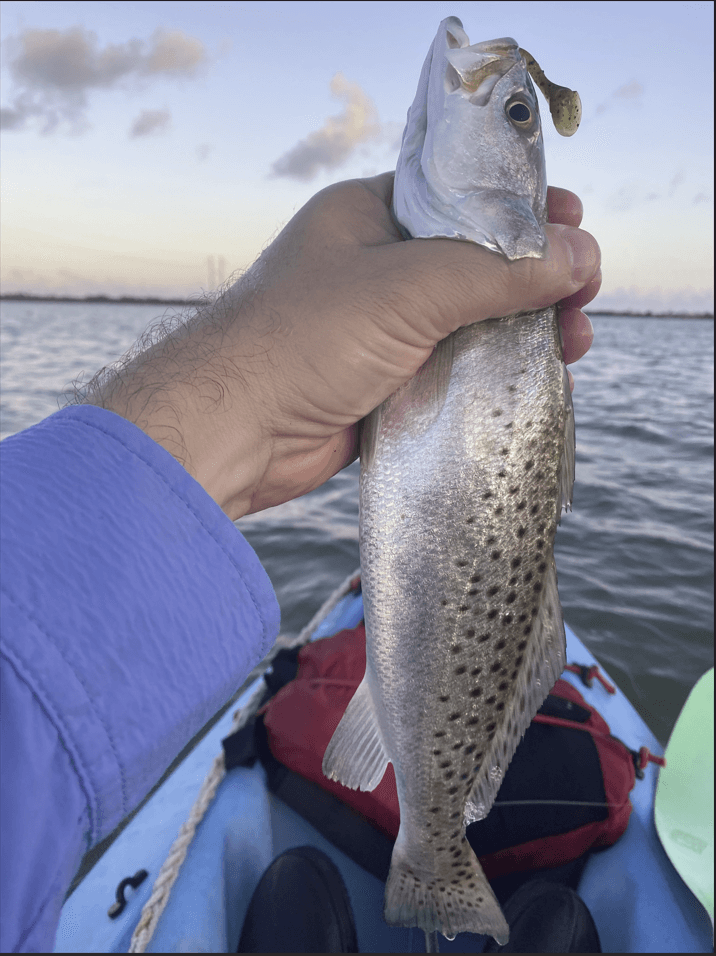
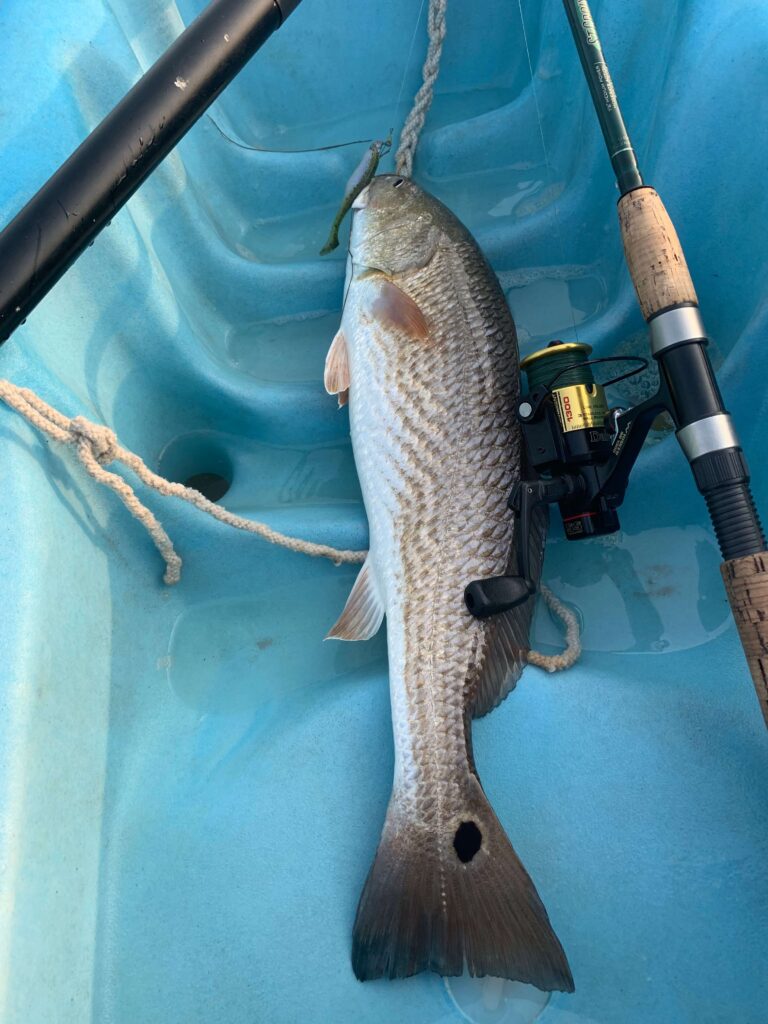
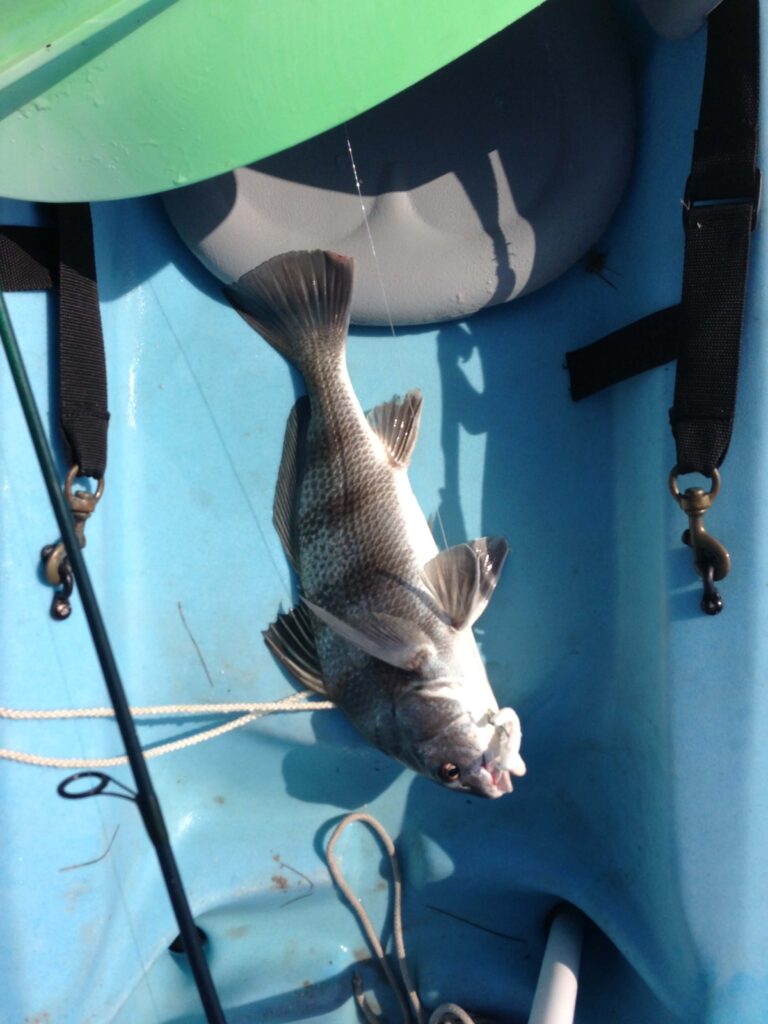
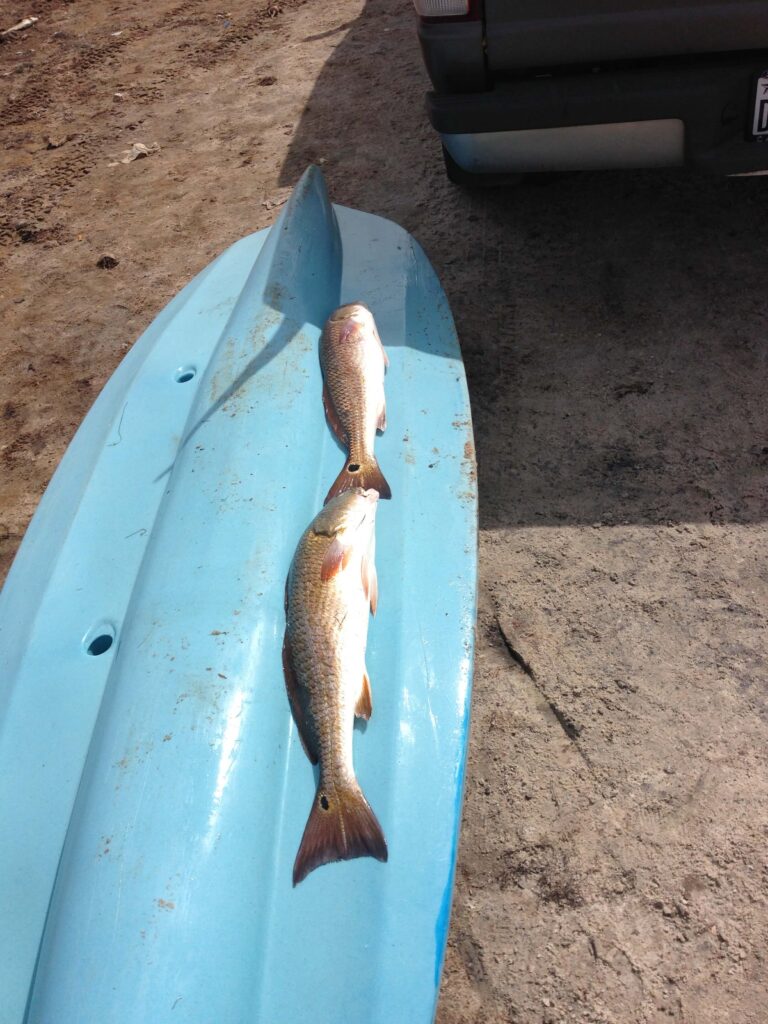
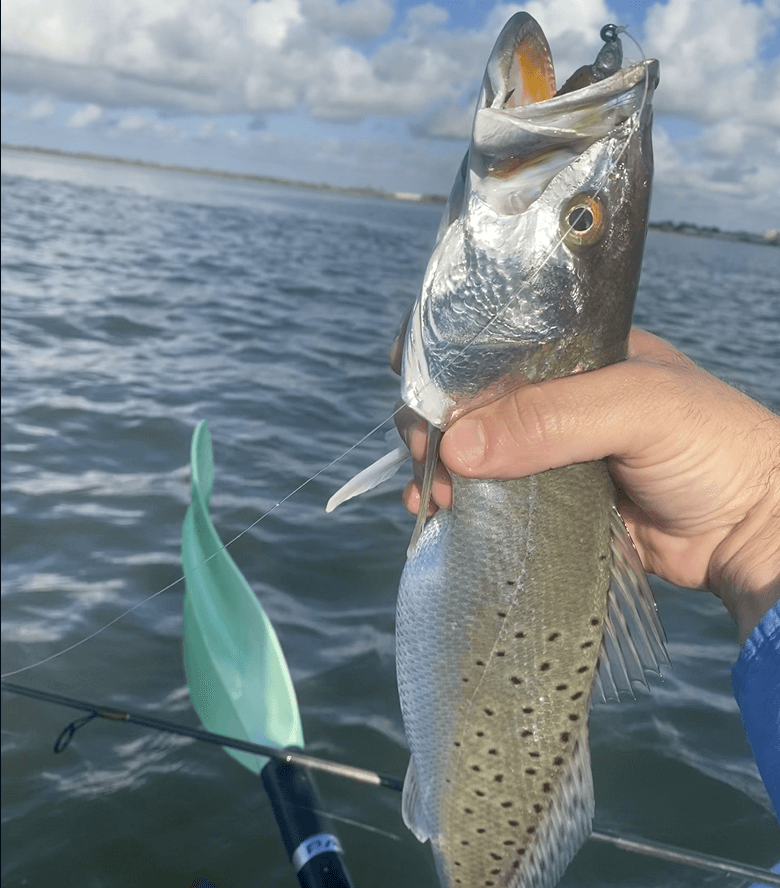
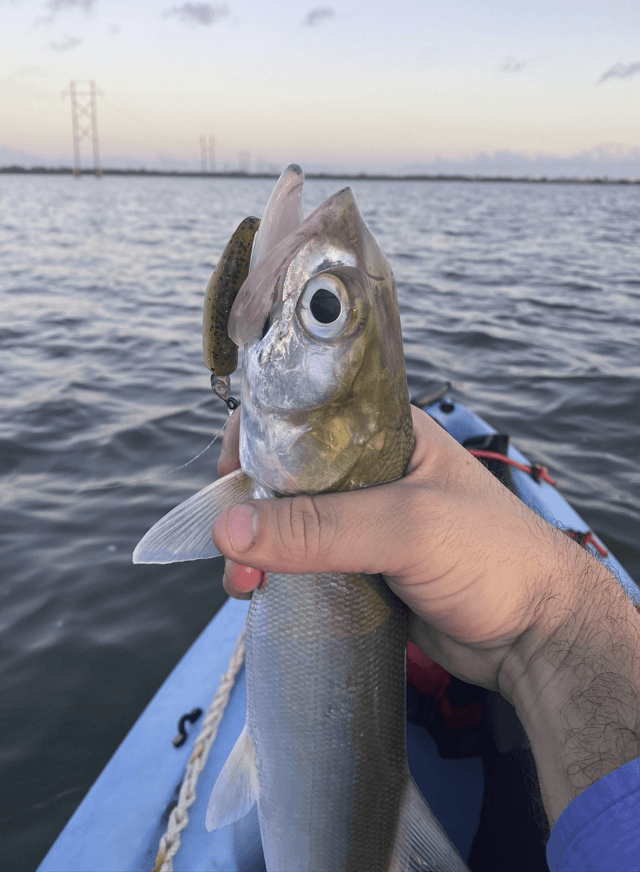
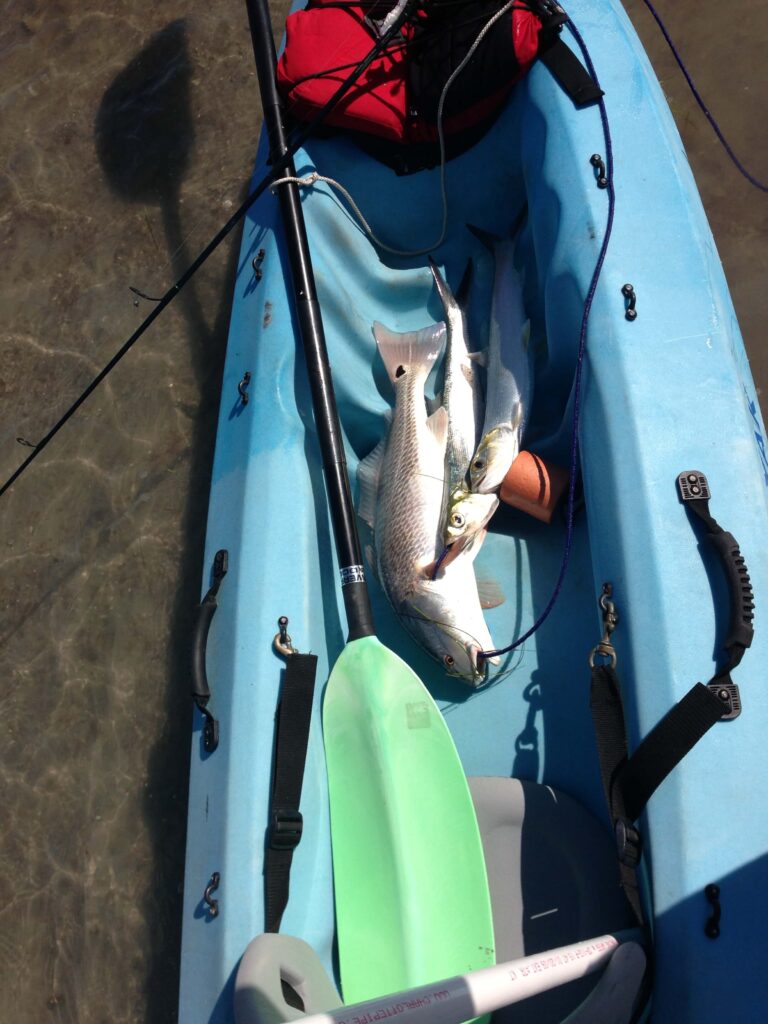
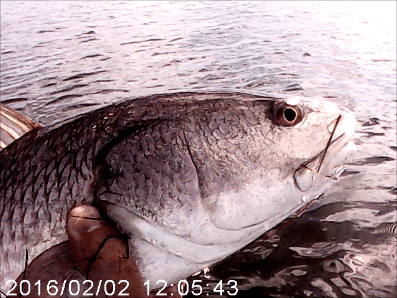
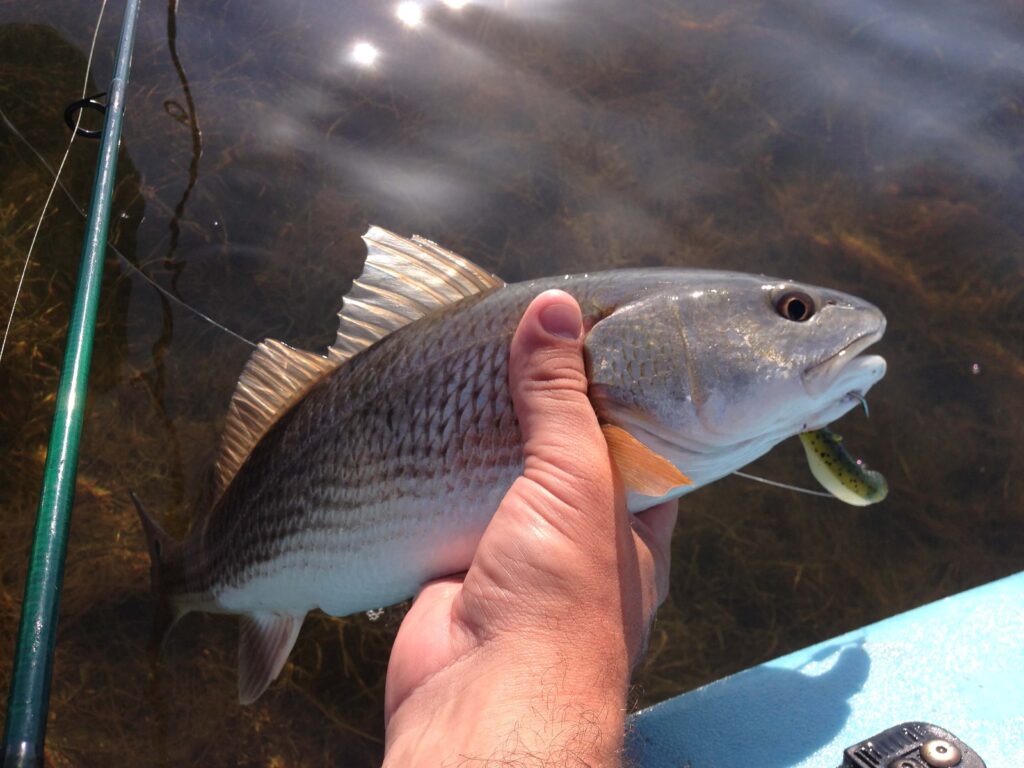
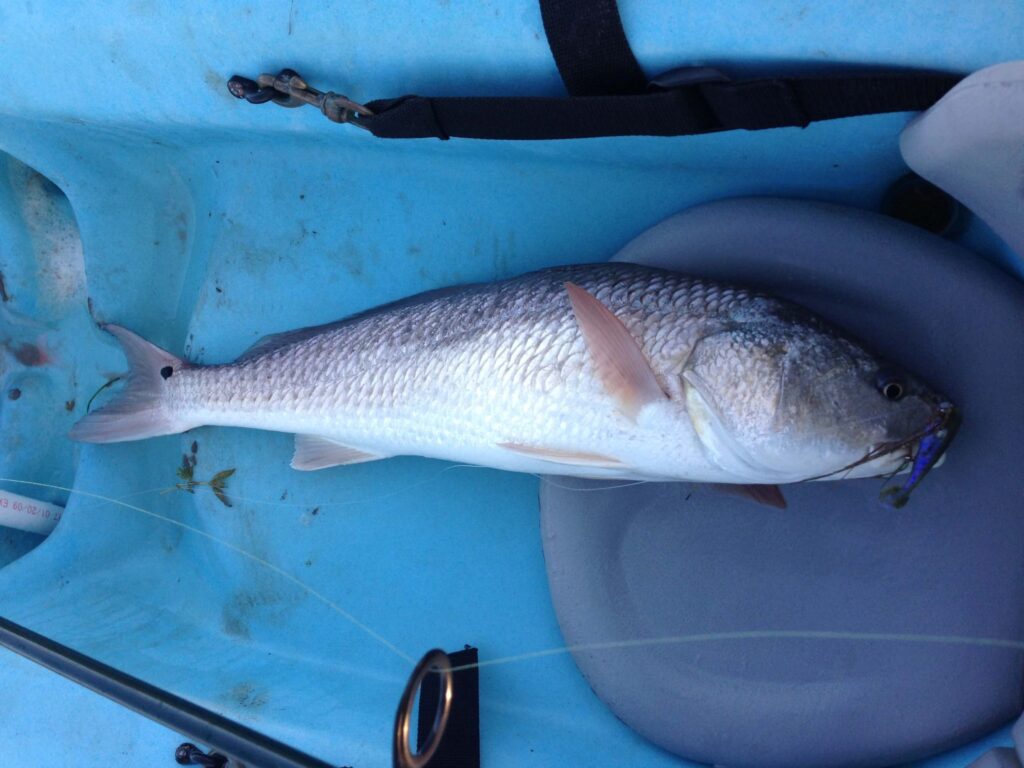

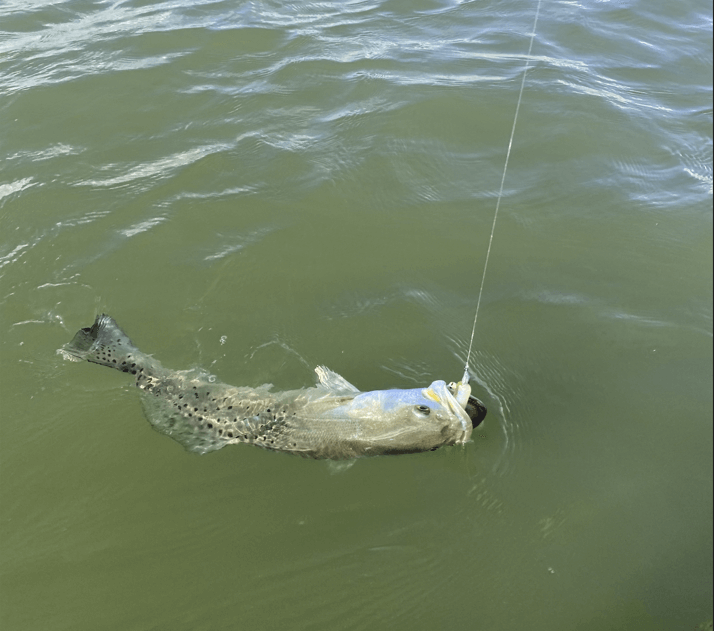

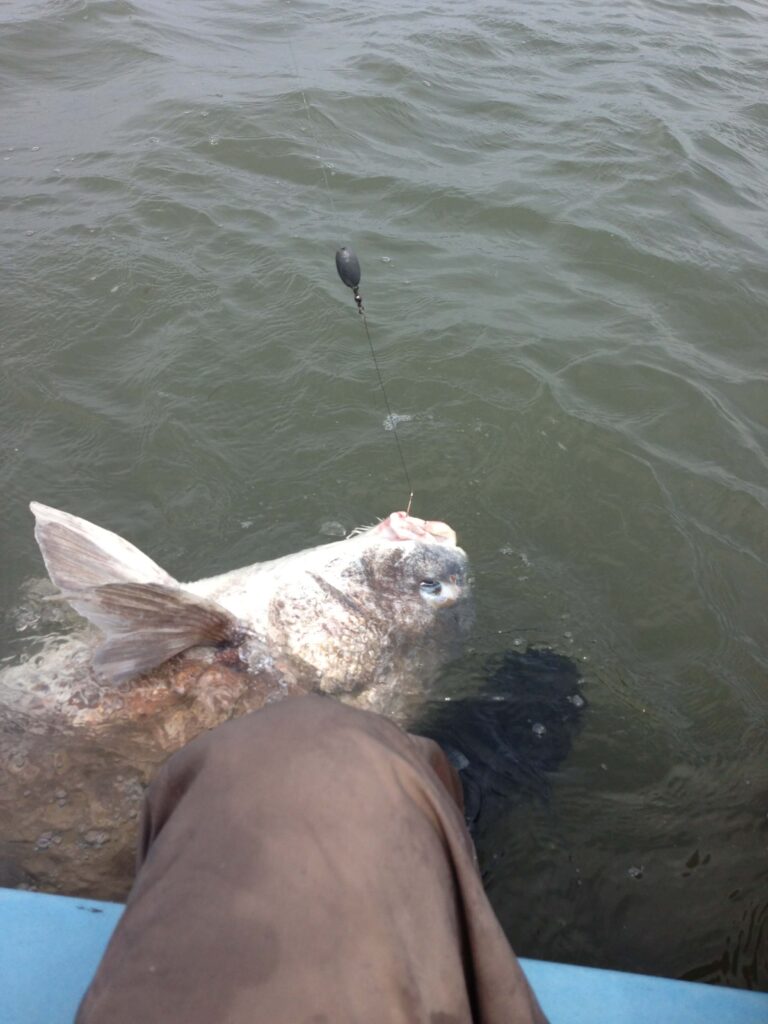
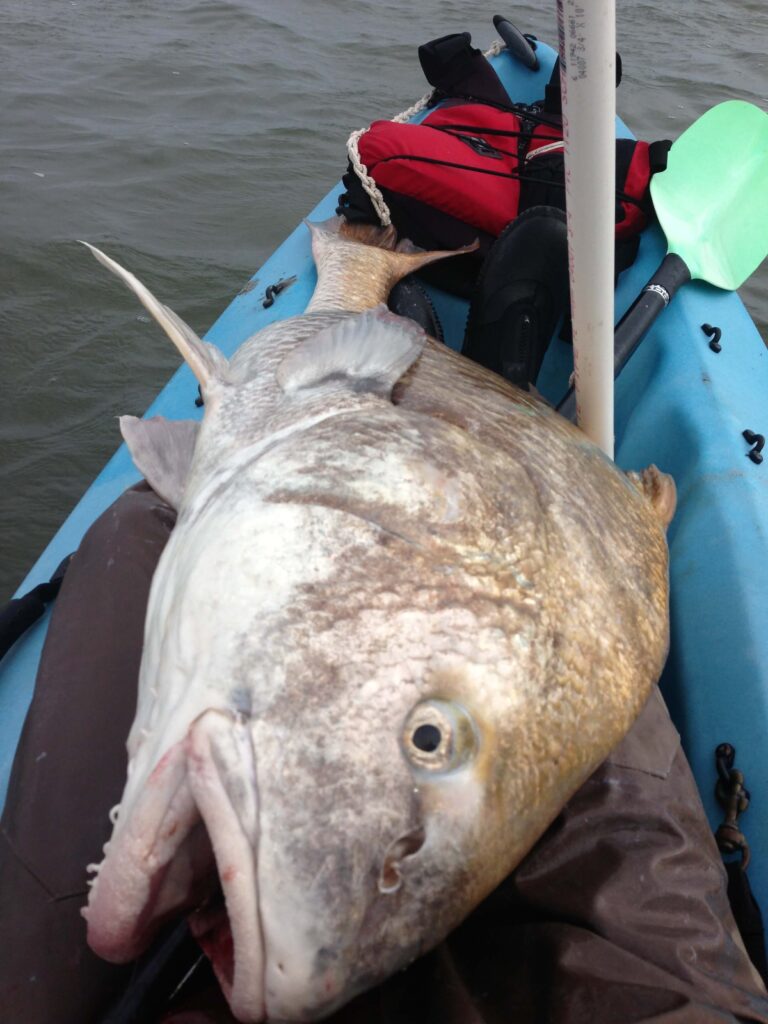

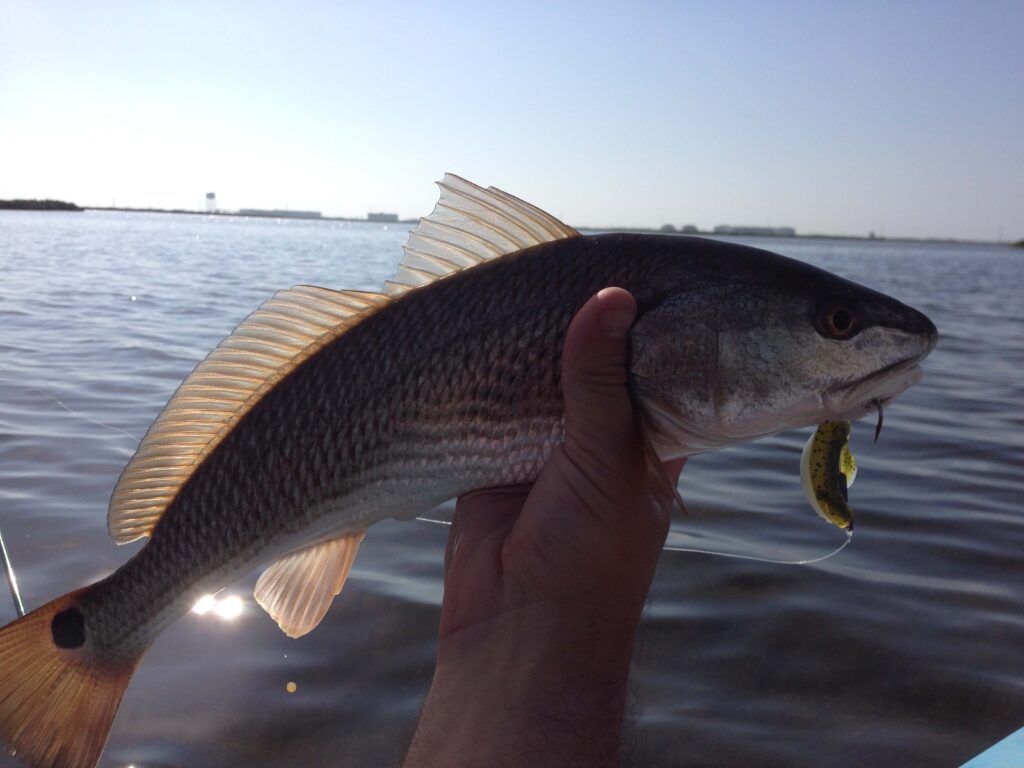
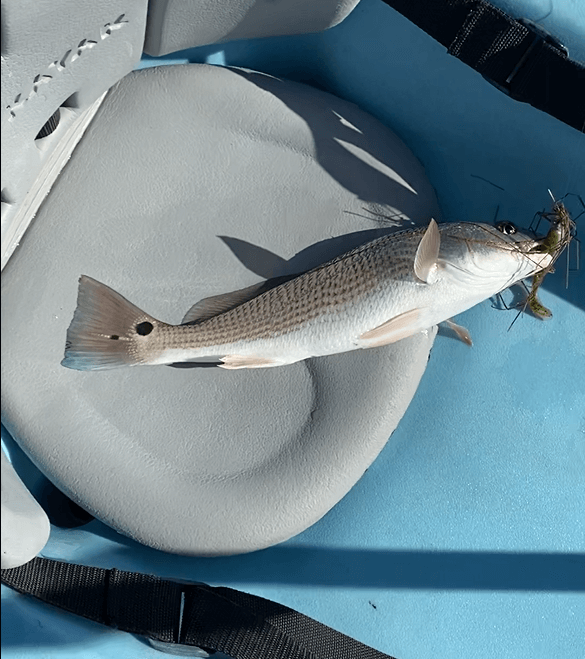
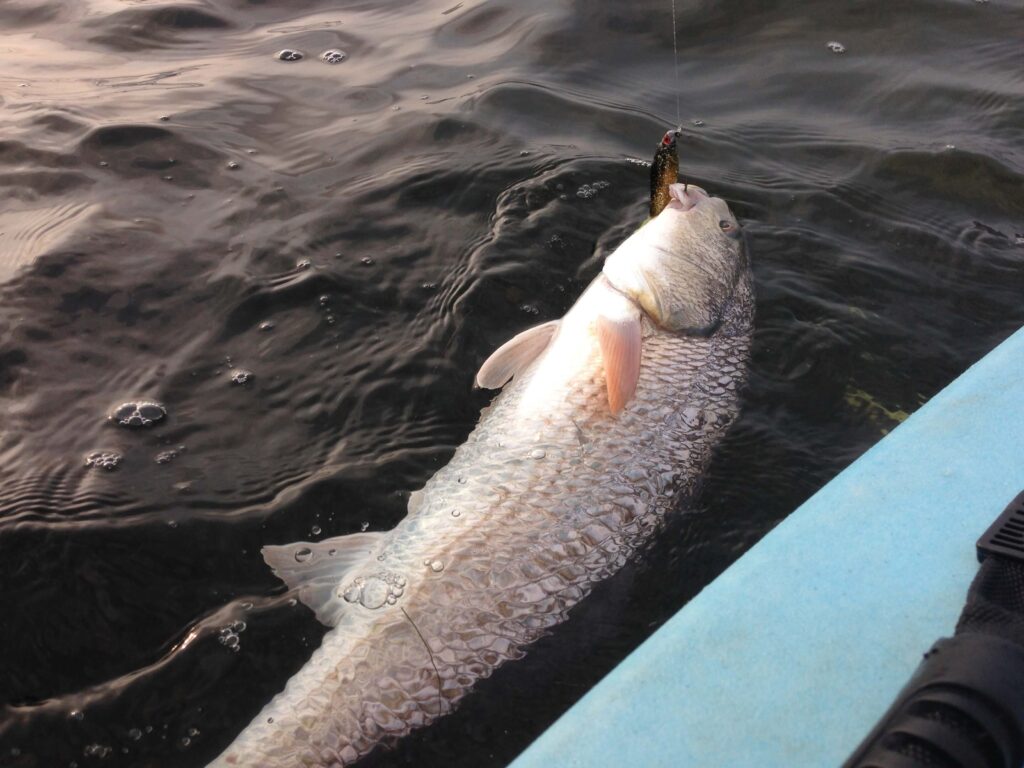
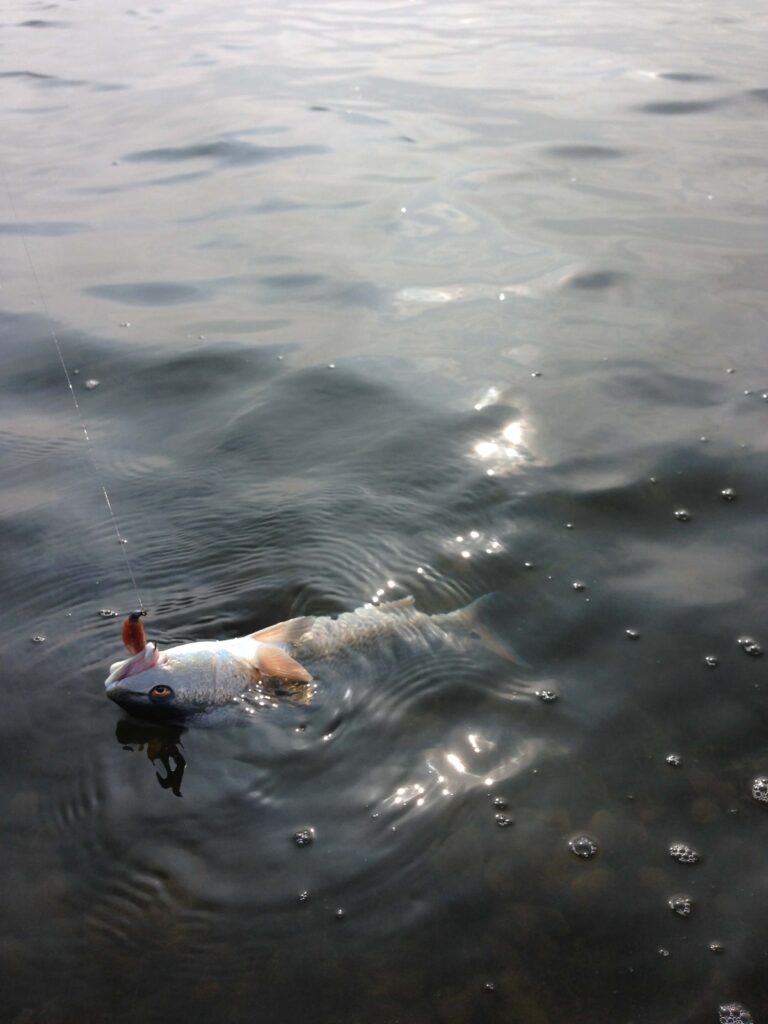
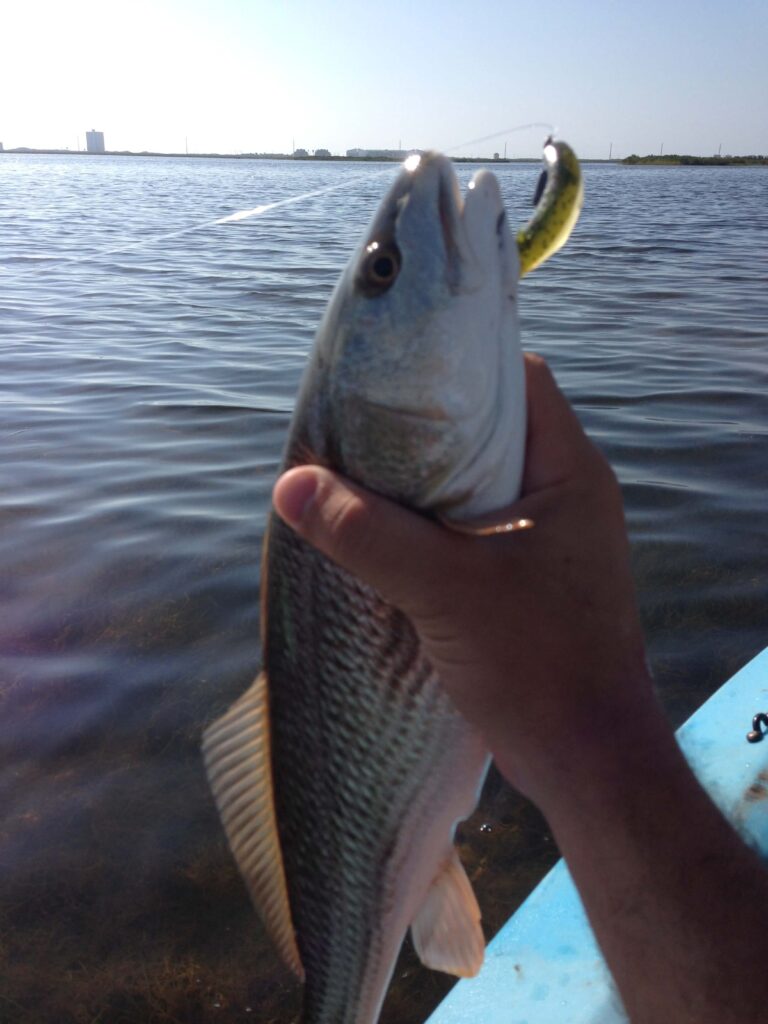
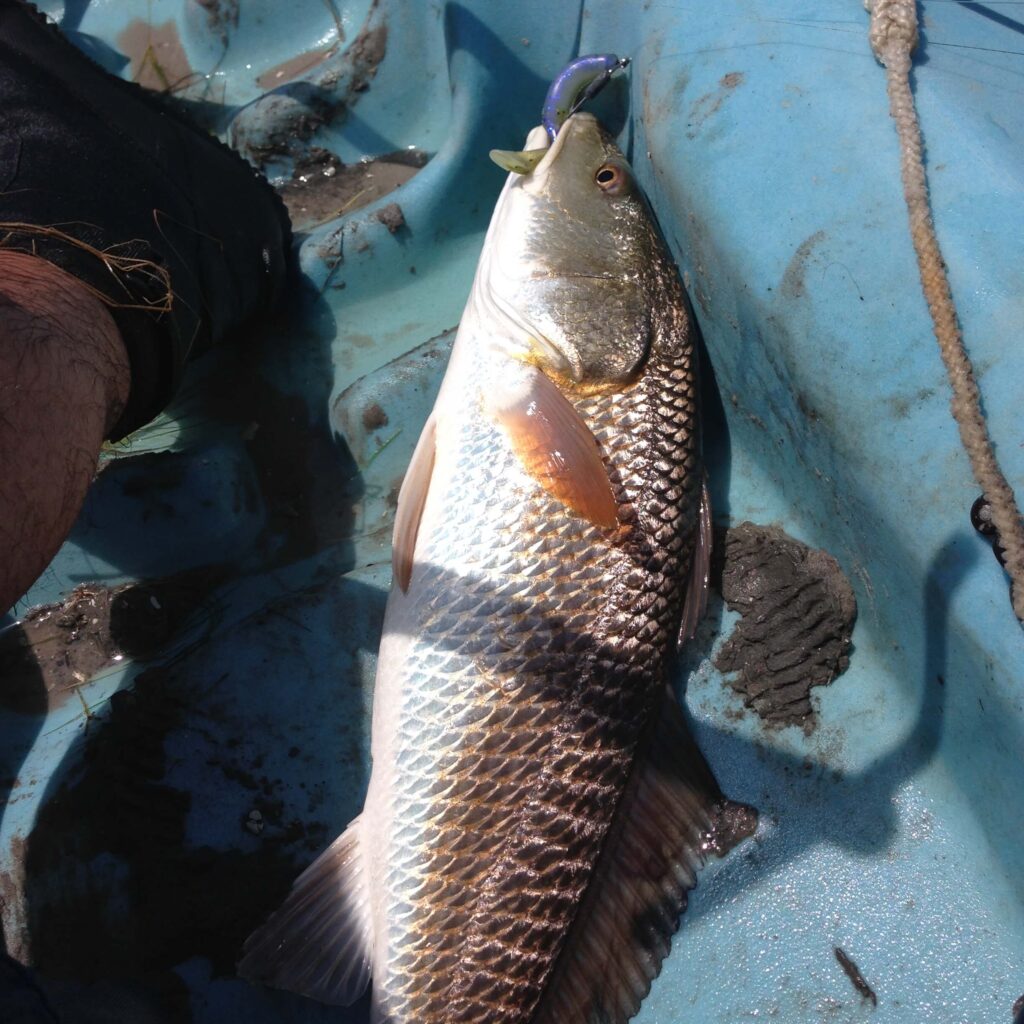
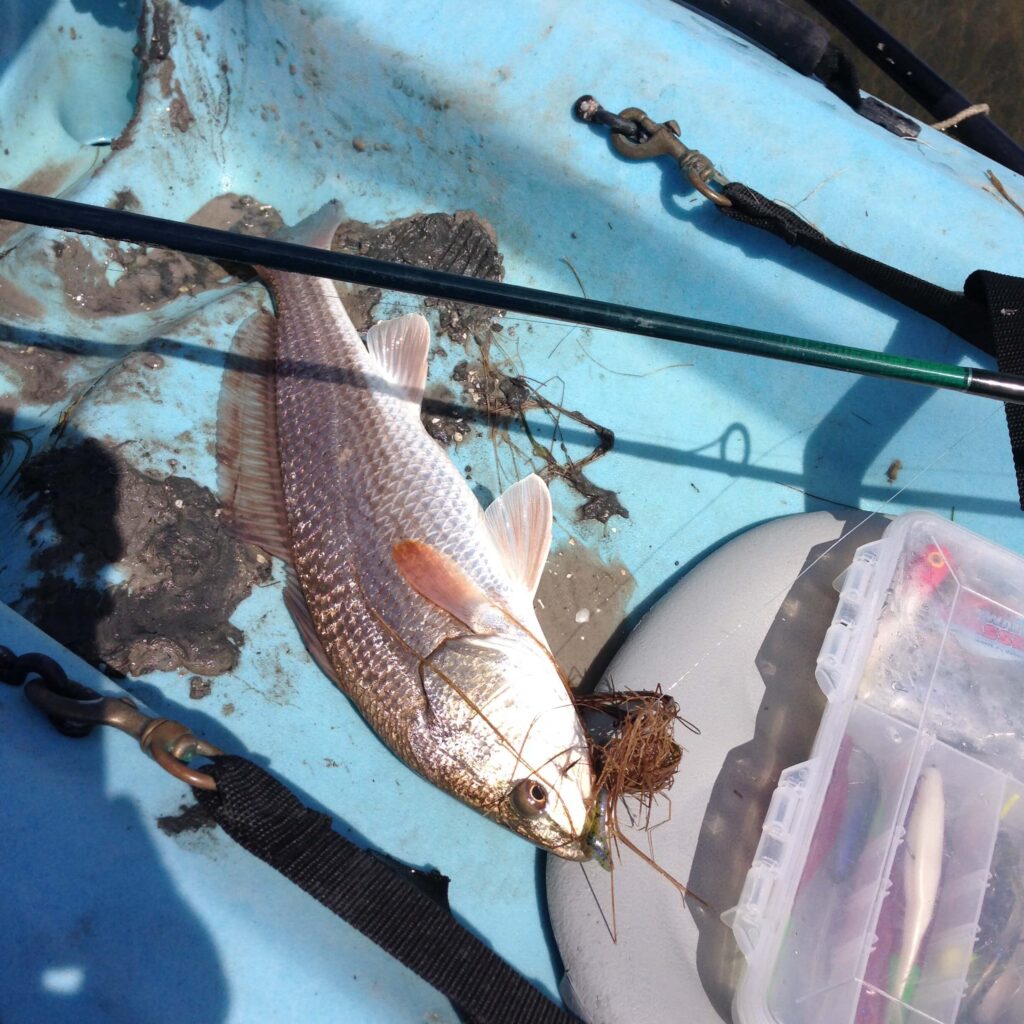
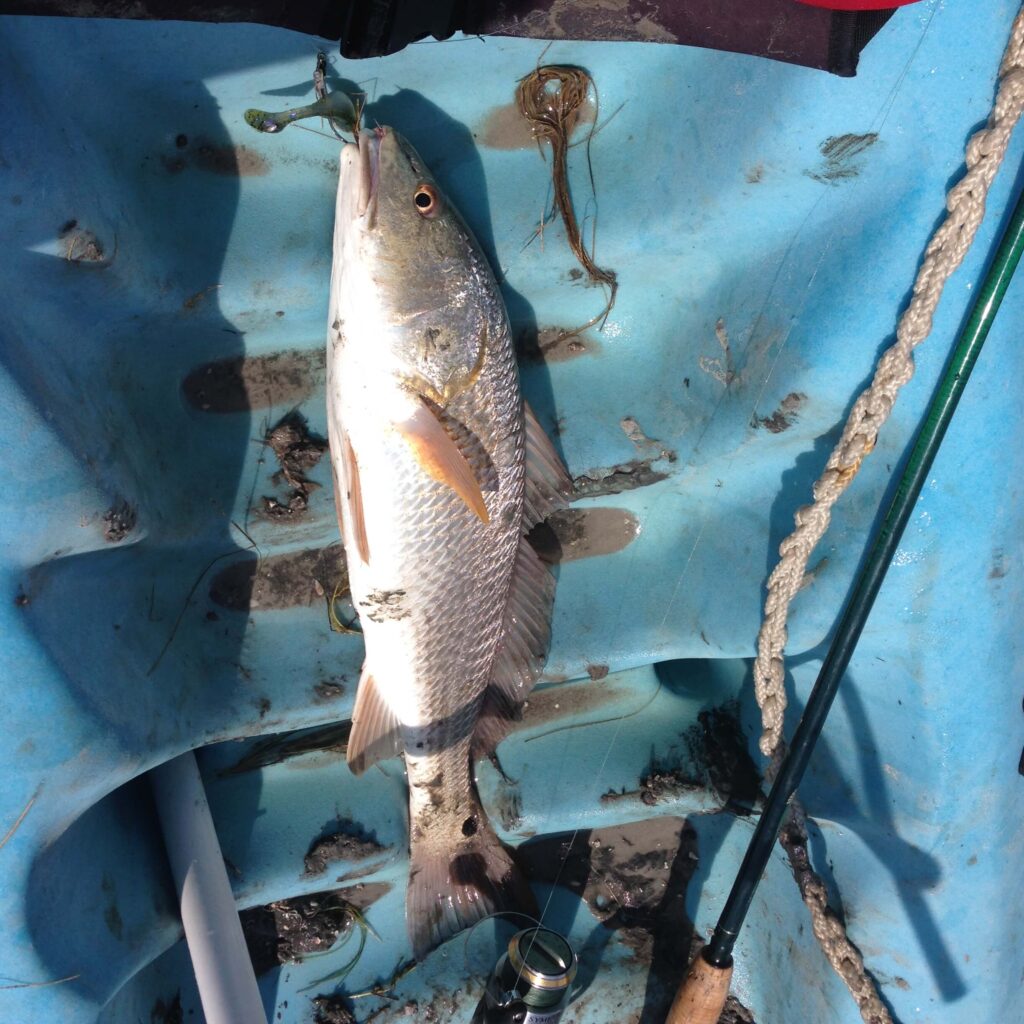
The above pictures are just a sample of the fish caught from Old Blue. I have caught many others, but either did not have my camera available or was too lazy to reach for it.
A Reliable and Simple Kayak
Old Blue has been a super-reliable piece of equipment, and tough as nails. A few facts about this kayak:
- The kayak doesn’t have pedals, a rudder, an outboard, a fish finder, a reclining/adjustable seat, a cooler, a live well, paddle holder, permanent rod holders, or an anchor system. It is very simple and old school.
- I purchased the kayak when I lived and fished on the Florida Space Coast (around 2007), and have been using it on the Texas Coast ever since I moved back. This means the kayak has been going strong for 17+ years and still has many more years of life left.
- I have paddled up to 8 miles in windy conditions. It was hard paddling, but not too shabby for kayak of this size loaded down with a paddler and gear. I only did this because I felt like it, typically I don’t travel further than 2 miles from the shore.
- Hauling, handling, and set-up is simple and easy with this kayak. I can lift it overhead (without straining) to put it onto a car roof or into a truck bed. It is short enough that it can be hauled in a short truck bed without a tailgate extender.
- I have done absolutely zero repairs or physical modifications to the kayak, other than replacing the original bungee cords. Early on I considered cutting a storage port, but decided against it in order to maintain the integrity of the enclosed hull during surf launches in big waves. Also, I never installed permanent rod holders; my rod holders are attached to my kayak crate only.
Types of Kayaks
Kayaks have been around for hundreds of years, and were built and used by native cultures for fishing and hunting. Traditionally, a kayak was understood to be a light and slender boat that you paddle. A kayak is typically skinnier and lower to the water than a canoe, and the paddle consists of a pole with a paddle blade on each end (unlike a canoe that has a single blade). Modern kayak options are vast, so I have divided them into three basic groups:
Group 1: Sit-inside kayaks
Group 2: Plastic, sit-on top kayaks
Group 3: Plastic, sit-on top, pedal or motor driven “fishing kayaks”
Group 1 kayaks include any kayak of any material or any length that you sit “inside”, versus sit “on top”. These aren’t typically used in Texas coastal fishing, although there is no rule against it. The main reasons that they were never popular:
- Some of them can flood easily if you are paddling through choppy waters.
- They have less gear storage options on the deck.
- Some are extremely narrow and can tip over easily; high-level paddling skills are required to right them if they flip over.
- Some are so long they are difficult to store and transport.
I’m sure in some parts of the country/world, Group 1 kayaks are used for fishing, they just have never been popular in Texas coastal fishing. Group 1 kayaks are a very broad category, and it includes cheap, small toy kayaks all the way to long distance touring kayaks (i.e., real kayaks).
Group 2 kayaks include the basic plastic sit-on-top kayak. Old Blue is a Group 2 kayak. These became popular in the 90’s and were quite a revolutionary idea. They are are made of molded plastic, and instead of sitting inside them, there is a molded depression where you sit, hence the “sit-on-top” description. Coastal fishermen quickly realized their potential, and invented creative ways to “rig” them. As far as I can remember, there was no “fishing kayak” during this era; instead, you would pick a suitable sit-on-top kayak, and rig it with a kayak crate, rod holders, etc. to your liking. Rigging techniques were shared freely on the internet. Popular brands included Ocean Kayak, Perception, Wilderness Systems, and Hobie, to name a few. These kayaks were popular with fishermen because:
- If you take on water, the kayak won’t sink because it is fully enclosed.
- They are more stable than most Group 1 kayaks.
- Plenty of room for gear storage on top.
- Some of them had high weight capacities, and could hold “big guys”.
- Most of them paddled pretty well even though they were wider and sometimes heavier than Group 1 kayaks.
Group 2 kayaks are still around today, although from what I can tell they have fallen out of favor due to the hype/marketing of Group 3 kayaks (fishing kayaks). Group 2 kayaks could be kept very simple (like Old Blue), or could be tricked out with anything imaginable, like live bait wells, anchor systems, and electronics.
Group 3 kayaks (a.k.a fishing kayaks, pedal kayaks, modern kayaks) are all the rage nowadays. They are basically a highly evolved version of Group 2 kayaks. I’ve never owned or used one, but they are popular for all of the reasons as Group 2 kayaks, but in addition:
- They are pedal driven or have a small electric motor (outboard motor or trolling motor), therefore paddling effort is not required.
- They are wider, hold even more gear, and have lots of storage compartments.
- Many of the have adjustable/reclining seats.
- There are modern ways to attach gear to the kayak (such as track mounting systems) that make it easy to attach any accessory you want, including rods holders and any type of electronic device. This is easier than the old school method of “figuring it out”.
Really, Group 3 kayaks don’t fit the definition of kayak at all. I mean, if you don’t have to paddle it, it’s not really a kayak. They really are more of a kayak-boat hybrid. Due to their pedal drive/motor systems and all of the accessory options, these kayaks are generally more expensive than Group 2 kayaks.
So there you have it, three groups of kayaks. Anyone can use any type of kayak that they prefer, and it really does come down to personal preference. I prefer Group 2 kayaks, because over-gearing myself when fishing drives me nuts and takes the fun away for me. So I will continue to do things the hard (but simple) way. My kayak articles on this site are also focused on Group 2 kayaks, but don’t let that scare you away…there are many tips that any kayak fisherman can benefit from.
Benefits of Kayak Fishing
Kayak fishing has numerous benefits:
- It is a simple way of fishing that has been around for hundreds of years. It’s similar to how the native peoples have fished with their kayaks, canoes, dugouts, etc.
- Launching and paddling a kayak is great exercise.
- You can launch at places that aren’t boat ramps, like parks, seawalls, roadway right-of-ways, and other public access locations.
- You can easily launch a kayak yourself, without help.
- Kayaks are made of tough plastic, so they can tolerate being dragged across sand, gravel, or grass. I try to avoid this, but do it from time to time. Also, bumping into an oyster reef or barnacle-encrusted pilings is no bit deal.
- They are a quiet way to enjoy nature (no noisy engine).
- They are a quiet way to approach fish (small profile, no trolling motor, no hatches to slam).
- You can take them into extreme shallows, unlike any boat. This is a great way to find isolated redfish.
- If you’re not catching fish, you can paddle to a new spot! You have the ability to fish a variety of water depth and bottom conditions.
- It is a great way to fish shallow, muddy bottoms that would be a challenge to wadefish.
- Not only can you fish in the bay, but on a light wind day, you can fish the beach front beyond the surf zone.
- Kayak fishing is extremely relaxing, usually. You will have space to yourself, and won’t have to be elbow to elbow with other fishermen like you sometimes are when shore fishing.
- Cheaper than owning a fishing boat (warning: modern pedal kayaks are not “cheap” by any means, but paddle kayaks are still reasonable).
- No ongoing fees. You don’t have to register it with the state like a fishing boat, you don’t need a trailer with a license plate, and you can store it at home, so no storage fees.
- Very low maintenance, and there is not much to break or “go bad”. I rinse my kayak with freshwater after each trip, but event if I didn’t do this, I’m sure it would still be fine. The plastic is tough and is immune to saltwater.
Cons of Kayak Fishing
- Kayak fishing is fun (at least to me), but that fun has to be earned. Kayak fishing is not easy, and it is definitely not for everybody. Kayak fishing is sometimes un-fun and very hard. Kayak fishing on the middle Texas coast is not comparable to kayaking on a calm lake. In the Corpus Christi area, the wind blows out of the southeast between 15 mph and 30 mph on a regular basis (spring time is typically the windiest). We get a fair share of calm/light wind days as well, but windy days are the norm. Paddling around and handling the kayak in wind like this is a chore and takes a certain level of fitness, but if you don’t learn to fish in it, then your fishing days will be extremely limited!
- Loading and unloading a kayak is also a chore. At a minimum, you will have to load the kayak at your house and strap it in/down to your vehicle, unstrap it and unload it at your fishing spot, load it (again) and strap it in/down to your vehicle (again) when you are done fishing, and unstrap it and unload it when you get home.
- Fitting gear onto your kayak can take some effort. There are many different kayak designs out there, with decks and storage compartments molded in different shapes and sizes. Figuring out the best and most efficient way to attach and stow gear on any kayak will require a bit of effort, and it may take a few trips to get it right.
- Finally, kayaks are small, cramped, and somewhat uncomfortable. Unlike a nice fishing boat, you do not have the luxury of standing and casting from the bow of a boat or standing on a poling platform. You are basically sitting on a foam seat with your legs forward and bent the entire time.
- You need to watch out for fast moving fishing boats. You can see them easier than they can see you. I have never had a problem, but I do take great care to stay visible and I don’t dilly dally when crossing boat channels.
Getting Started
To get started I recommend borrowing or renting any basic kayak and trying to fish out of it. It does not need to be fancy kayak, and any sit-on-top (Group 2) kayak would be a good one to try. Kayak fishing is largely about personal preference, and you won’t learn what you do/don’t like until you try it.
Find a safe and shallow place to launch, and only take one rod and a few items with you the first time. The rod can sit in your lap, which will keep your hands free to to paddle (rod holders can come later). Don’t worry about catching fish, just learn to paddle the kayak, balance, and cast while you are seated. I plan to dive deep into the details of kayak fishing in future articles, so please check the kayak fishing section of this site frequently for more information.
Closing
I encourage you to consider kayak fishing, it is a great aspect of the sport. If you have been put off by the price or complexity of modern kayaks, no need to worry any longer. Just grab that basic kayak and get started. This article is proof that it will work.
Have a reel good day,
– The Simple Fisherman
